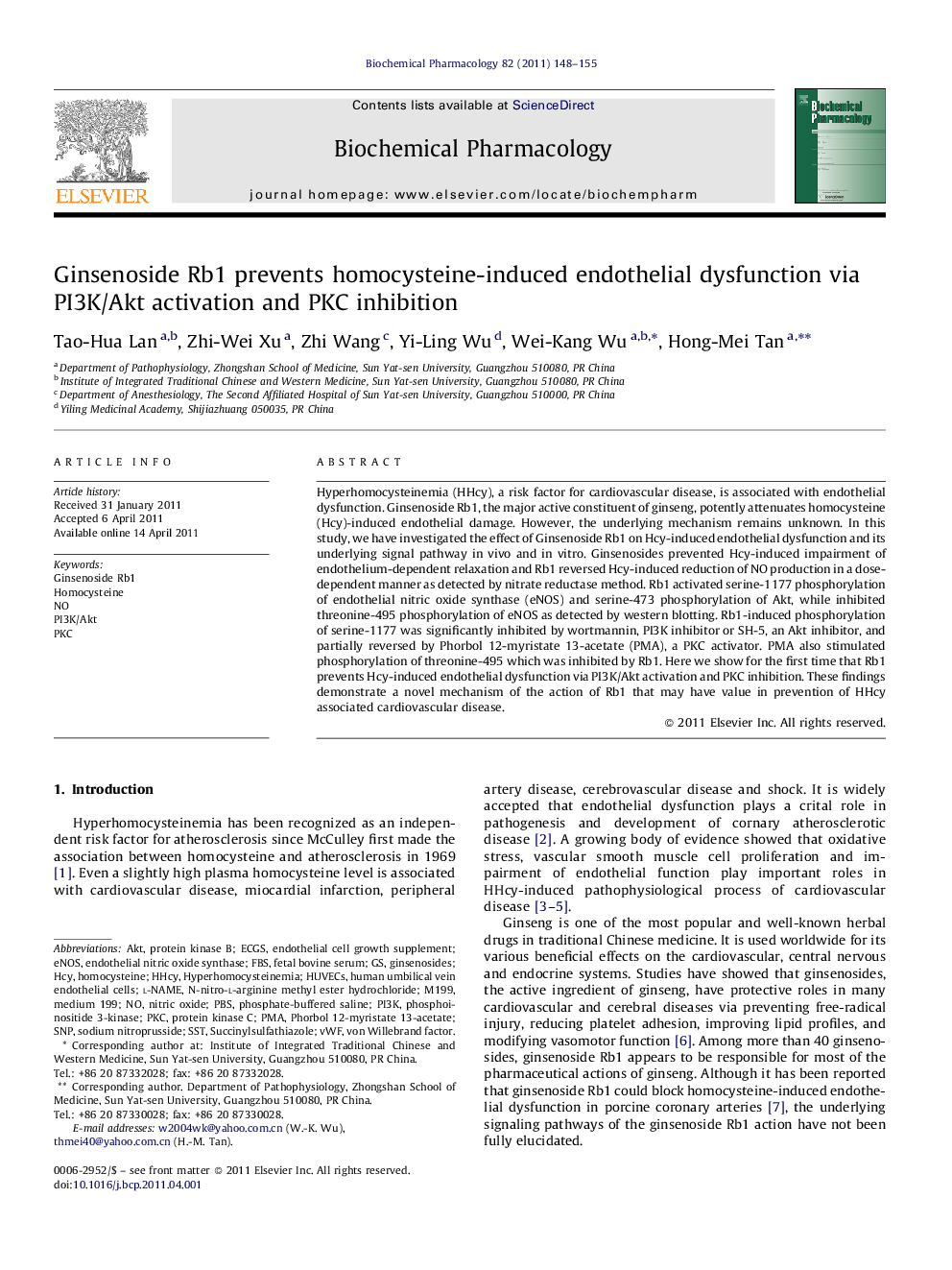| Article ID | Journal | Published Year | Pages | File Type |
|---|---|---|---|---|
| 2513188 | Biochemical Pharmacology | 2011 | 8 Pages |
Hyperhomocysteinemia (HHcy), a risk factor for cardiovascular disease, is associated with endothelial dysfunction. Ginsenoside Rb1, the major active constituent of ginseng, potently attenuates homocysteine (Hcy)-induced endothelial damage. However, the underlying mechanism remains unknown. In this study, we have investigated the effect of Ginsenoside Rb1 on Hcy-induced endothelial dysfunction and its underlying signal pathway in vivo and in vitro. Ginsenosides prevented Hcy-induced impairment of endothelium-dependent relaxation and Rb1 reversed Hcy-induced reduction of NO production in a dose-dependent manner as detected by nitrate reductase method. Rb1 activated serine-1177 phosphorylation of endothelial nitric oxide synthase (eNOS) and serine-473 phosphorylation of Akt, while inhibited threonine-495 phosphorylation of eNOS as detected by western blotting. Rb1-induced phosphorylation of serine-1177 was significantly inhibited by wortmannin, PI3K inhibitor or SH-5, an Akt inhibitor, and partially reversed by Phorbol 12-myristate 13-acetate (PMA), a PKC activator. PMA also stimulated phosphorylation of threonine-495 which was inhibited by Rb1. Here we show for the first time that Rb1 prevents Hcy-induced endothelial dysfunction via PI3K/Akt activation and PKC inhibition. These findings demonstrate a novel mechanism of the action of Rb1 that may have value in prevention of HHcy associated cardiovascular disease.
Graphical abstractFigure optionsDownload full-size imageDownload as PowerPoint slide
